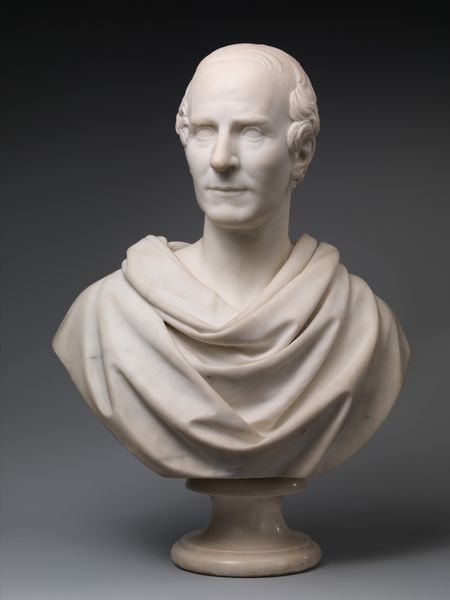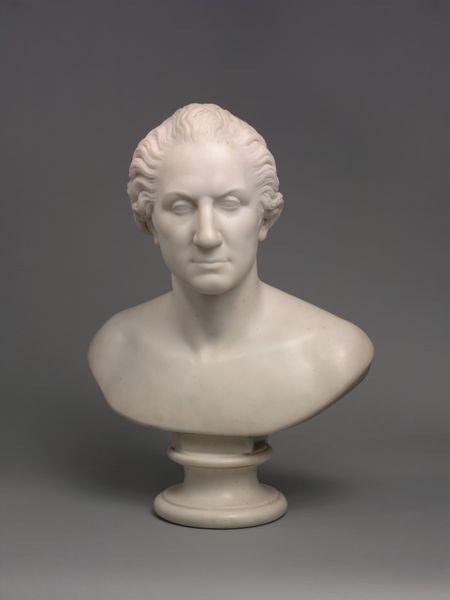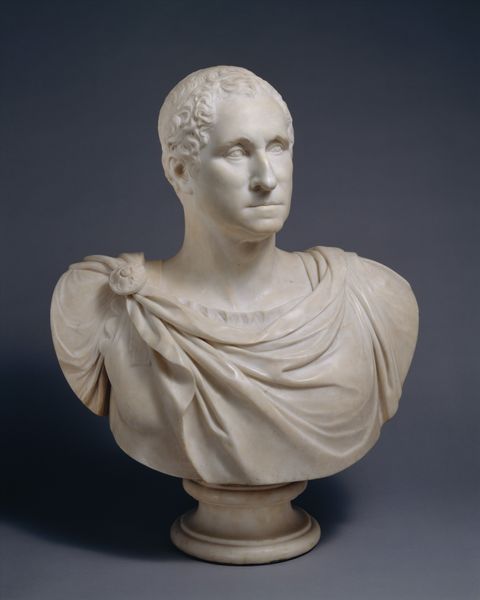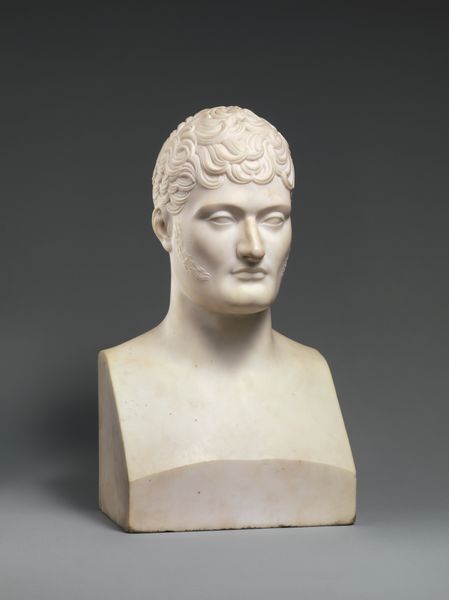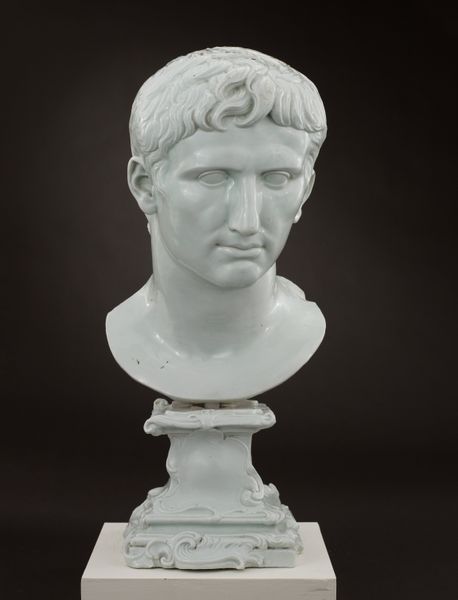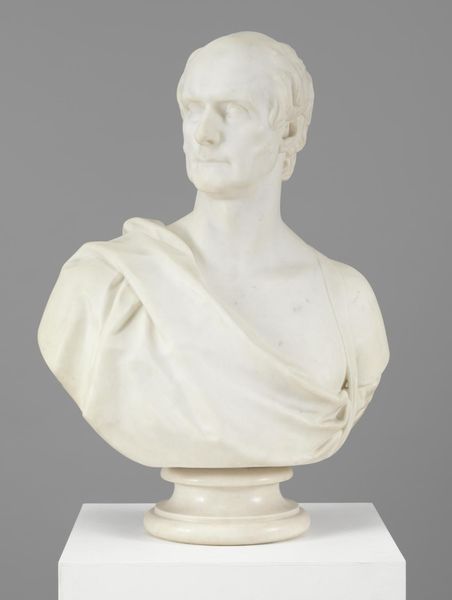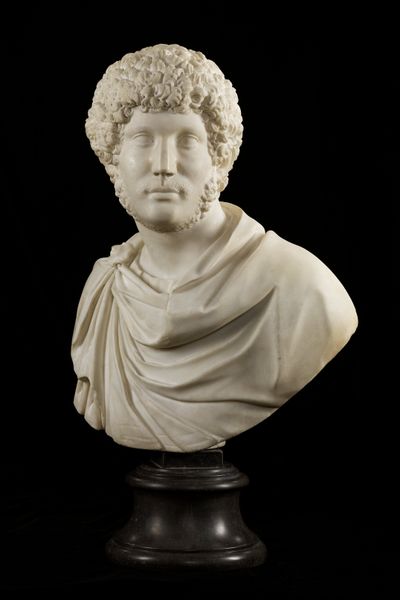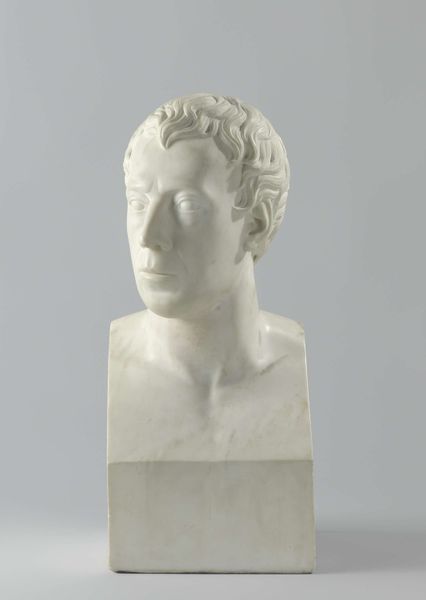
Arthur Wellesley, 1st Duke of Wellington (1769–1852) 1823
0:00
0:00
sculpture, marble
#
portrait
#
neoclacissism
#
sculpture
#
academic-art
#
decorative-art
#
marble
Dimensions: wt. confirmed: 31 × 22 × 11 in., 160 lb. (78.7 × 55.9 × 27.9 cm, 72.6 kg) Height, bust only: 25 3/4 in. (65.4 cm) Height (column): 47 3/4 in. (121.3 cm)
Copyright: Public Domain
Editor: This is Sir Francis Chantrey's marble bust of Arthur Wellesley, the Duke of Wellington, made in 1823. I’m struck by its almost theatrical grandeur. What sort of symbolism should we be aware of in a piece like this? Curator: Well, consider Wellington himself. What symbols did he embody to the British public at the time? Think of his role in the Napoleonic Wars and his later political career. It is likely a representation of power, authority, and steadfastness that Chantrey aims for. This kind of stoic representation reminds the viewer of ancient Roman leaders. The draped toga-like clothing references classical antiquity, and the choice of marble evokes the permanence and purity associated with classical sculpture. Editor: So the reference to the classical world is not merely aesthetic. The artist aims at immortalizing the subject by establishing symbolic equivalencies… Curator: Precisely. The symbolism is multivalent. This wasn't just a depiction of a man; it's a deliberate construction of an image designed to resonate with specific cultural memories. Observe how Chantrey softened the General’s features; softening, idealizing, yet retaining the force and focus that are associated with Wellington. What feeling do you have, recognizing this conscious modification? Editor: That it reveals not only the character of the Duke, but perhaps more profoundly, the aspirations that his contemporaries held of him? What symbols they projected upon him? Curator: Absolutely. The piece transcends being merely a likeness. It speaks volumes about how cultures memorialize and mythologize their leaders. Even today, we grapple with similar iconographic choices in representing figures of authority. Editor: That’s fascinating. It gives me so much to consider about how we visually encode power and legacy, even today. Curator: Indeed. It is not just about seeing; it's about decoding the visual language that shapes our understanding of history and leadership.
Comments
No comments
Be the first to comment and join the conversation on the ultimate creative platform.

